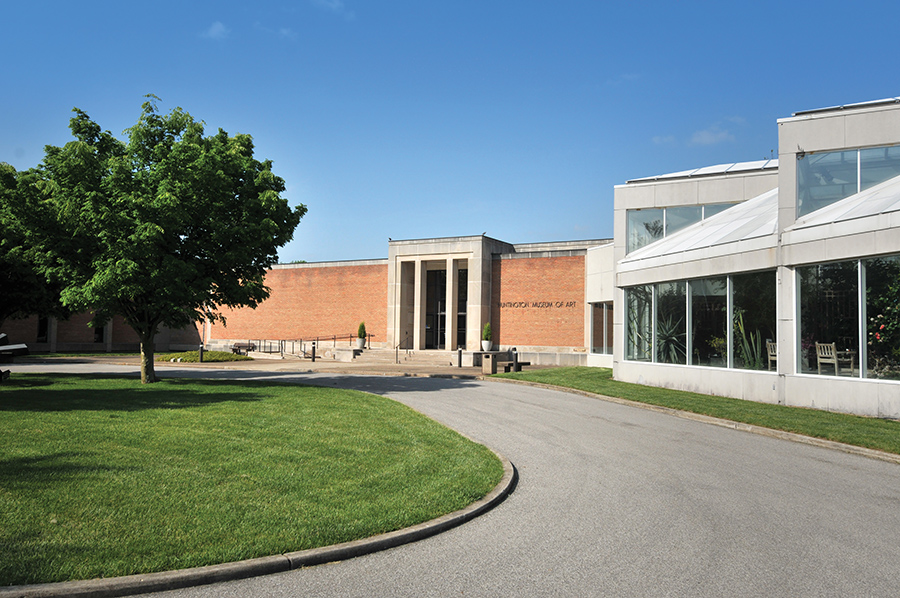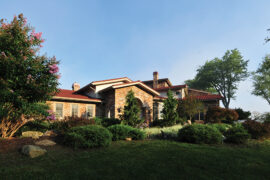Your Guide to Museums & More in Huntington
By James E. Casto
HQ 86 | SPRING 2014
From Webster’s Dictionary: Mu-se-um [myoo-zee-um]: A building or place where works of art, scientific specimens or other objects of permanent value are kept and displayed.
For a city Huntington’s size, we are fortunate enough to have a vast array of museums. Some, such as the Huntington Museum of Art, are nationally renowned. Others are more low-key, but equally compelling. Many feature special collections and studies in what makes this part of the country so unique. Whether it is our Appalachian heritage, our railroad roots, a dedicated physician’s love of medicine or one man’s passion for radio, Huntington’s museums have much to offer.
It is the dream of Huntington leaders Dr. Joseph Touma and A. Michael Perry that one day groups of people will travel to Huntington by bus or boat and see our city as a prime tourism destination. Perhaps they will shop at Pullman Square, visit the campus of Marshall University and take advantage of the rich histories inside each of our museums. The hard work of the men and women who operate our museums should be recognized, and not just by tourists, but by all those living in the Tri-State area.
Art at the Top
Perched high atop the wooded hills overlooking Huntington’s Ritter Park, the nationally-renouned Huntington Museum of Art offers visitors an opportunity to learn, play, discover and create.
The museum houses impressive collections of American and European paintings, sculpture, contemporary prints, folk art, British silver, Near Eastern art and prayer rugs, Ohio Valley glassware and antique firearms. It also regularly hosts world-class traveling art exhibits.
Visitors may rest and commune with nature in the museum’s courtyard sculpture garden, take a hike on its 1.5-mile nature trail or visit a tropical jungle in the C. Fred Edwards Conservatory, which is filled with blooming orchids and lush foliage. Art workshops and activities for children and adults are offered year-round. The Museum Shop offers jewelry, gift items, regional art and books.
Opened in 1952, the museum is the oldest art museum in West Virginia and by far the state’s largest. It attracts 17,000 visitors a year, plus nearly 8,000 children who visit on school tours.
Located at 2033 McCoy Road, the museum is accessible from Exit 8 off Interstate 64 or from Eigth Street in downtown Huntington. It’s open Tuesday from 10 a.m. to 9 p.m., Wednesday through Saturday from 10 a.m. to 5 p.m. and Sunday from noon to 5 p.m. It’s closed on Monday. Admission is free on Tuesday and $5 per person or $18 for a family of four or more on other days. For more information, call (304) 529-2701 or log on to www.hmoa.org.

Down on the Farm
A. Michael Perry, a retired banker and the founder of Heritage Farm Museum and Village, recalls that when he started his career, he could have spent his weekends playing golf. He didn’t. Instead, he began spending his time hunting down antiques. He found he enjoyed poking around looking for “old stuff.” Moreover, he welcomed the fact it was an activity in which his wife, Henriella, and their children could happily join him.
Over the years, what started out as a weekend hobby grew into a passion. Soon Perry graduated from purchasing various objects here and there to buying old log structures, hauling them to his farm and reassembling them.
First there was one building, then two and then three. Today, the vast complex boasts nearly two dozen buildings, including a log church, one-room schoolhouse, blacksmith shop, mill and broom shop, saw mills and others. Museum displays offer an informative look at Appalachia’s history. Guided tours offer visitors an opportunity to step back in time for a fun-filled, educational and relaxing experience.
Several times a year the museum offers what Perry has christened “Way Back Weekends,” which focus on particular activities. This summer the July 5 weekend will combine an old-fashioned ice cream social with an antique car show. Aug. 2 will bring the Heritage Farm Musical Festival, and on Sept. 6 the museum will host its fourth annual Country Roads Cast-Iron Cook-Off.
Tours of the Museum of Progress, Museum of Transportation and the County Store Museum are offered Monday through Saturday from 10 a.m. to 3 p.m. The last tour begins at 2 p.m. each day. (In December, January and February, tours are offered only if weather permits.) Guests may tour the other Heritage Farm exhibits by advance reservation. Heritage Farm is also a popular venue for weddings, corporate events and retreats. Overnight stays are offered in five different log homes (with all the modern conveniences).
At 3300 Harvey Road, Heritage Farm is located 2.6 miles from Exit 8 off Interstate 64. For driving directions, reservations or more information, call (304) 522-1244 or log on to www.heritagefarmmuseum.com.

Tune this in
Housed in the former Harveytown Elementary School Building at 1640 Florence Ave., Huntington’s Museum of Radio and Technology offers one of the nation’s largest collections of radios, televisions and other electronic equipment, from the 1920s to the present.
Exhibits include some of the earliest telegraphs, a 1950s-era radio and television showroom, a vintage Hi-Fi Room with sound equipment of all types, an area dedicated to military communications and even an old-time radio repair shop. A stroll through a broadcast studio reveals how disc jockeys spun the records that we listened to decades ago.
A fully operational amateur “ham” radio station is on the air at the museum. Visitors who show a valid FCC amateur radio license are welcome to talk with the world.
Staffed by volunteers, the museum is open Saturday from 10 a.m. to 4 p.m. and Sunday from 1-4 p.m. year-round. It’s also open from 10 a.m. to 4 p.m. most Fridays in late spring, summer and early fall. There is no charge for admission, although there’s a collection box for voluntary donations. For driving directions or more information, call (304) 525-8890 or log on to www.mrtwv.org.
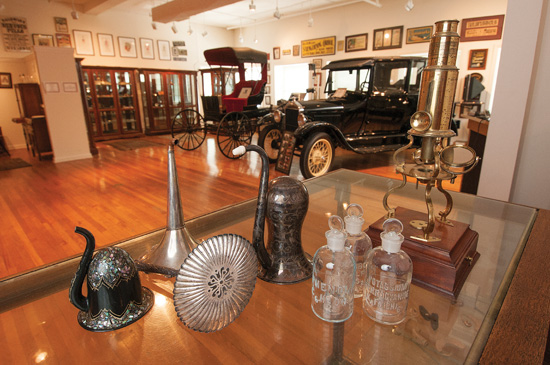
Medical Memories
For years, Dr. Joseph Touma, an internationally known ear, nose and throat specialist, collected antique medical instruments. Eventually they filled his Huntington home, prompting his wife, Omayma, to demand he do something with them. His daughter, Mona, said he should open a museum. And that’s exactly what he did.
As luck would have it, Touma, who’s restored a number of buildings in downtown Huntington, was working on one that offered a perfect place to house his collection.
Taking up the entire third floor of a former retail store building, the Touma Museum of Medicine is a 4,000-square-foot treasure trove of medical history. It houses antique medical books, old medical instruments, a turn-of-the-century dental office, an historic drugstore, even a 1913 doctor’s buggy and a Model-T Ford Doctor’s Coupe. Ear trumpets were the earliest devices used to help the hearing impaired, and Touma says his 280-piece collection of ear trumpets is the world’s largest.
The Touma Museum of Medicine, located at 314 Ninth St., is open only by appointment. For information, call the Touma Ear, Hearing and Balance Center at (304) 522-8800.
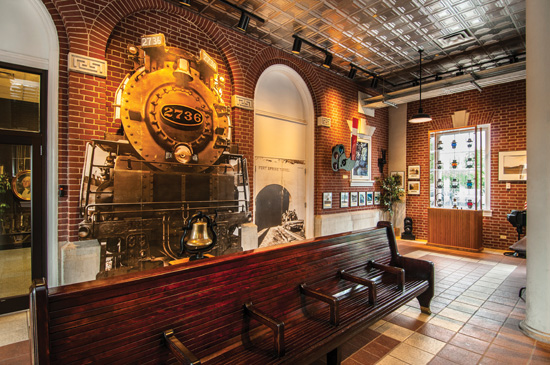
All Aboard
Huntington has not one but two museums filled with railroad memories.
The Collis P. Huntington Railroad Historical Society Inc. has an outdoor museum located in Memorial Park at West 14th Street. The museum’s centerpiece is a Baldwin H-6 locomotive, the next-to-last steam locomotive built for a Class 1 American railroad. The 1308 was one of nine that were built. Ultimately, seven of them went to the scrap yard. The 1309 is in the B&O Museum in Baltimore and the 1308 has been on display in Huntington since 1962.
The outdoor museum also is home to an old-fashioned railroad handcar, an Operation Lifesaver caboose, a C&O caboose and a replica CSX diesel cab.
Staffed by Railroad Society volunteers, the outdoor museum is open from Memorial Day to Labor Day on Sunday from 2 – 5 p.m. For more information, call the Society at (304) 523-0364 or log on to www.newrivertrain.com.
In the early 20th century, the C&O Railway constructed nine new passenger stations along its route, all of a handsome red brick Colonial Revival design that might have looked perfectly in place on a college campus. Built in 1912-1913 on the south side of Seventh Avenue between Ninth and 10th streets, Huntington’s station was the largest of the nine. In the heyday of rail passenger service, it was a busy place. But all that changed when the C&O’s passenger trains reached the end of the line.
The old station might have been abandoned. Instead, CSX Transportation (today’s successor to the C&O) converted it for office use. A mini-museum located in the eastern end of the building offers visitors a glimpse of the glory days of passenger railroading. The museum is open to the public Monday through Friday from 9 a.m. to 5 p.m.
If you visit, don’t miss the statue of rail mogul and town founder Collis P. Huntington that stands on the building’s front lawn. The statue was done by famed sculptor Gutzon Borglum who carved the giant presidential faces at Mount Rushmore. For more information, call (304) 522-5146.

Flying High
World War II flying ace Charles E. “Chuck” Yeager became the fastest man alive on Oct. 14, 1947, when he became the first pilot to fly faster than the speed of sound.
A native of Lincoln County, Yeager has always had close ties to Huntington and to Marshall University. In 1969, Marshall presented the famed flyer with an honorary degree. Later he agreed to lend his name to Marshall’s Society of Yeager Scholars, a scholarship program for talented youngsters.
In 1987, Yeager presented Marshall with many of the trophies, awards and other mementos from his long career. The collection is housed in the Yeager Room at MU’s Morrow Library. It’s open to the public Monday through Friday from 8 a.m. to 4:30 p.m. except for two weeks at Christmastime and other holidays the university observes. For more information, call (304) 696-3524.
Confederate Collection
During her lifetime, Rosanna A. Blake put together an amazing collection of Confederate history that’s considered to be one of the nation’s finest. Her library was donated to Marshall University after her death.
The Rosanna A. Blake Library of Confederate History houses not just rare books but also historic documents and manuscripts, journals and diaries, Civil War weapons, newspapers printed in the South during the war, Confederate money, Civil War sheet music, prints, sketches, maps and more.
Blake Library Bibliographer Jack L. Dickinson is especially proud that the collection boasts not just one letter from Confederate General Robert E. Lee, but three, along with a letter by Jefferson Davis, president of the Confederate States of America.
Housed in Marshall’s Morrow Library, the Blake Library is open Monday through Thursday from 9 a.m. to 3 p.m. It’s open on Friday by appointment only. Visitors should call ahead at (304) 696-3097 or (304) 696-2343 to ensure that the Blake Library will be open.
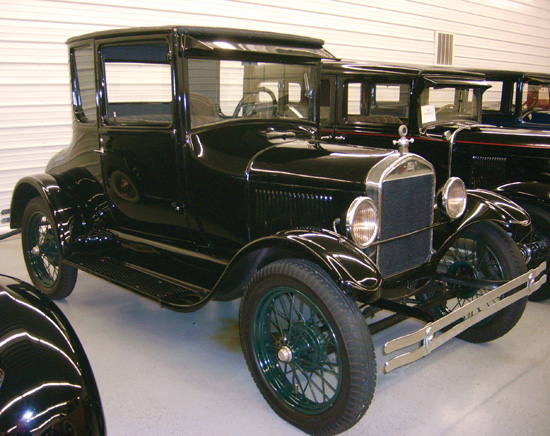
Love Old Cars?
If so, then you’re invited to travel back in time via a visit to the J. Taylor Auto Collection.
Veteran car buff Jimmy Taylor offers free admission to his personal collection of more than 30 automobiles, dating back to 1914. On display are Model T and Model A Fords, a rare 1930 V-16 Cadillac limousine, a 12-cylinder Caddy, along with various convertibles and custom cars.
Located at 1404 Washington Ave. in Huntington’s historic Central City neighborhood, the museum is open Thursday from 5 – 9 p.m. and Saturday from 10 a.m. to 6 p.m. or by appointment.
For more information, call (304) 522-2864 or log on to www.jtaylorautocollection.com.

